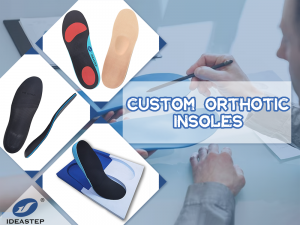
There are many ways to customize insoles, such as CAD milling, Heat moldable, etc. What are the main differences between them?
1. Heat Moldable Insoles: These insoles are made from a material that softens with heat, typically through the use of an oven or hot water. Once heated, the insoles can be placed in your shoes, and as they cool, they mold to the contours of your feet. This process creates a customized fit and better support.
2. Custom Orthotics: Custom orthotics are prescription insoles specifically tailored to your feet. They are typically obtained through a healthcare professional. To create custom orthotics, a healthcare provider takes detailed measurements, scans, or molds of your feet to design insoles that address your individual foot structure, gait patterns, and specific needs. These orthotics offer the highest level of customization, focusing on correcting biomechanical issues and providing optimal support.
3. Over-the-counter (OTC) Insoles: OTC insoles are pre-made, mass-produced insoles available for direct purchase without a prescription. While they offer some level of customization, such as arch support options or different sizes, they are not specifically designed for your individual foot structure or needs. Nevertheless, OTC insoles can still provide added comfort, cushioning, and basic support for general foot conditions.
4. DIY Modifications: Some individuals may opt to customize their insoles by making manual modifications. This can involve trimming or shaping the insoles to fit better within their shoes or enhance certain areas of support. While this approach provides limited customization, it can be a cost-effective alternative for minor adjustments.
Ultimately, the level of customization will vary among these methods. Heat moldable insoles offer a moderate level of personalization, whereas custom orthotics are the most precise and tailored option.
Expand more related content: https://www.aideastep.com/custom-orthotic/.
